

If you read the last issue of MSSH you’ll probably recall the Slouchy bag I made from Modelo Faux Leather which is a really easy to sew fabric that’s available in a variety of rich, zingy colours (see this link).
I was amazed at the reaction to the bag and decided to use up my leftover fabric on a matching purse and key ring.
The purse is perfect for make-up and would work well as an evening bag.
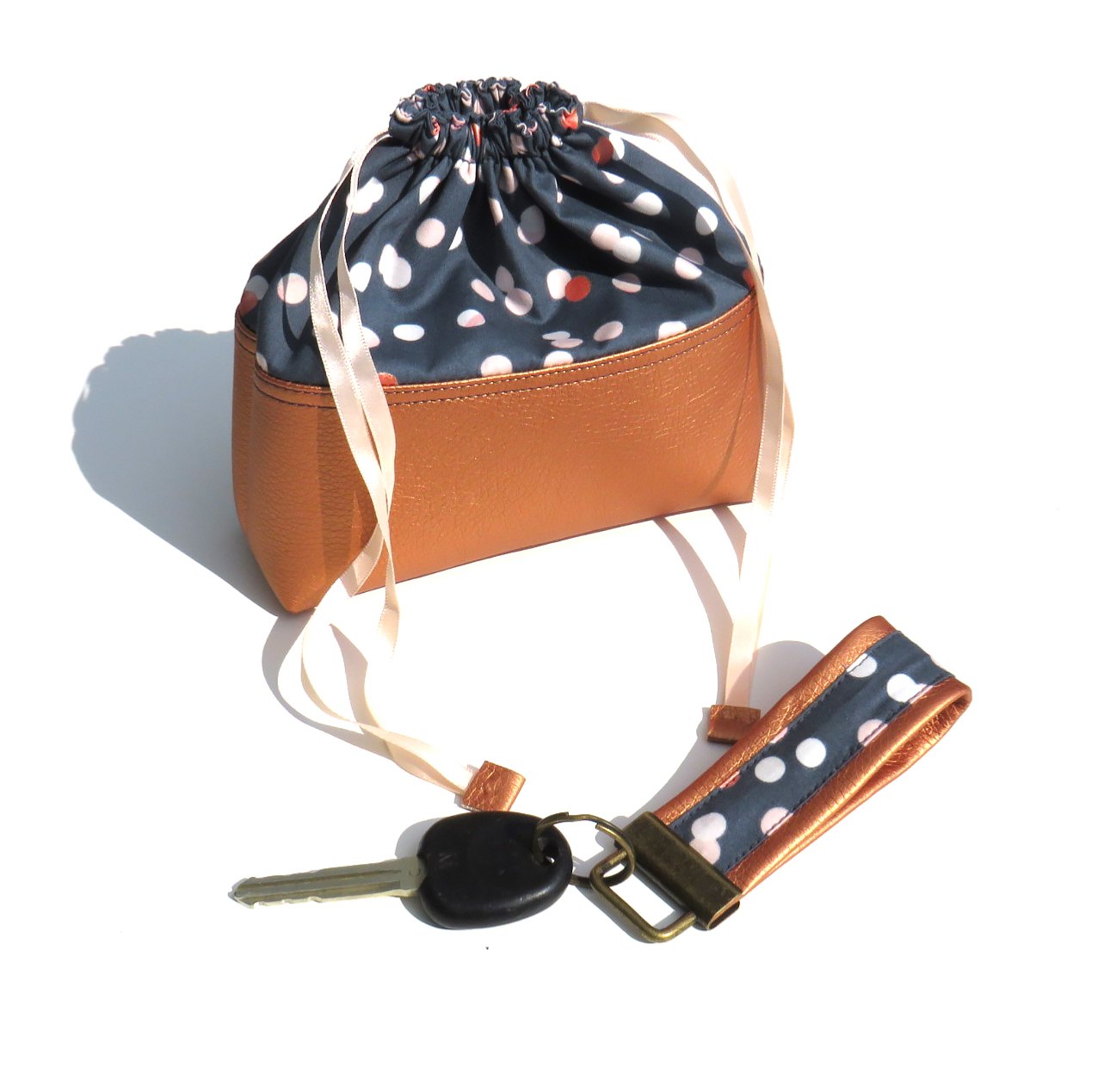
Requirements:-
Left over scraps from Slouchy Bag pattern or if using new fabric - 1 fat quarter of cotton fabric
Scraps of faux leather or a piece at least 10in x 12in
1 Prym Key Ring finding
1 metre narrow ribbon or cord to match the printed fabric
Matching thread and contrasting thread for topstitching
Tacky Glue
For the Drawstring bag cut:
Cut out four pieces from the cotton fabric each 8 1/2in x 8in
Cut out two pieces from the faux leather both 8.5in x 4 1/2in
Cut out two pieces from the faux leather both 1in x 1/2in
For the Key ring cut:
Cut one strip of printed cotton 2in x 8in
Cut one strip of faux leather 3in x 8in.
To make up the drawstring pouch use these instructions:
Seam allowance throughout is 1/4in
Depending on your faux leather you might find it easier to sew with a teflon foot or walking foot (the Modelo is easy to sew with so I didn't need either), also make sure you increase your stitch length a little to around 2.4 as this avoids stressing the faux leather at the seams. The faux leather used for this is the Modelo one that is available in a great range of colours including metallic and pearl finishes. It has a woven fabric backing which sews really well with a normal machine foot.
To make your keyring use these instructions:
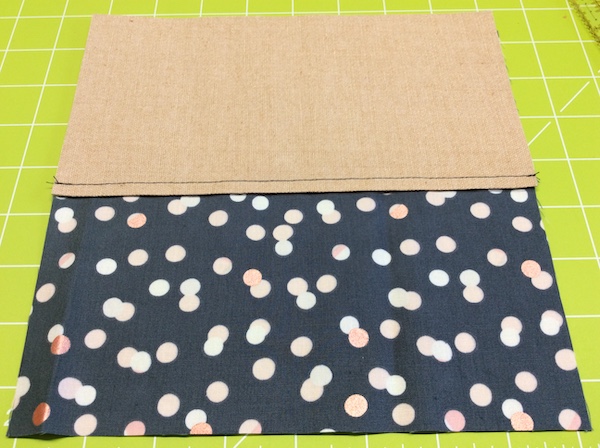
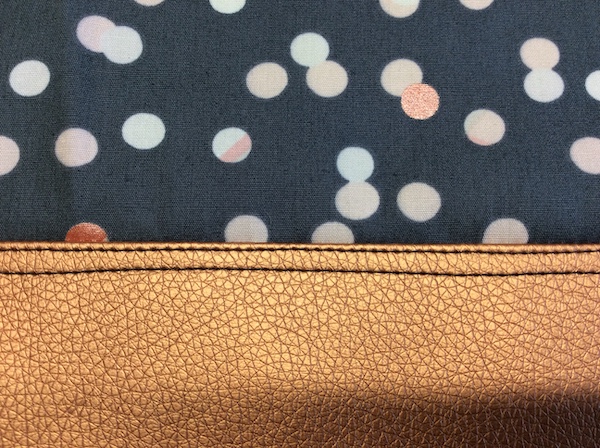

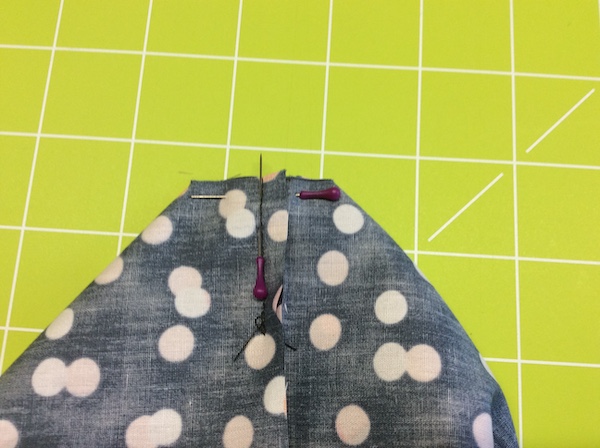
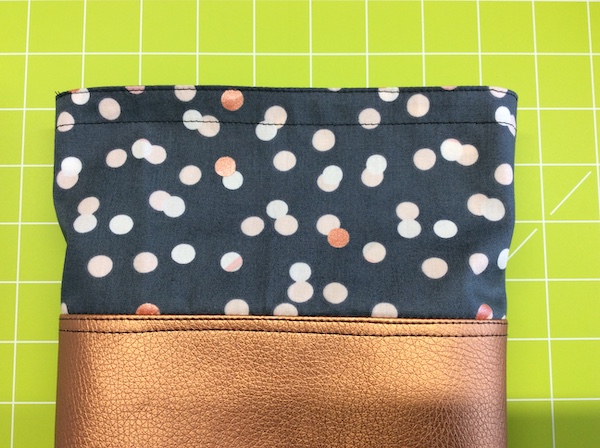
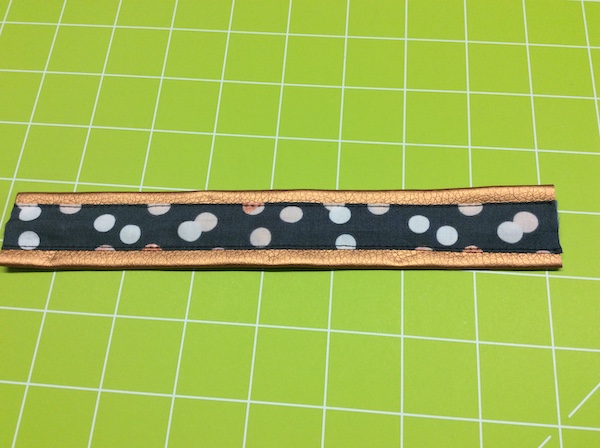
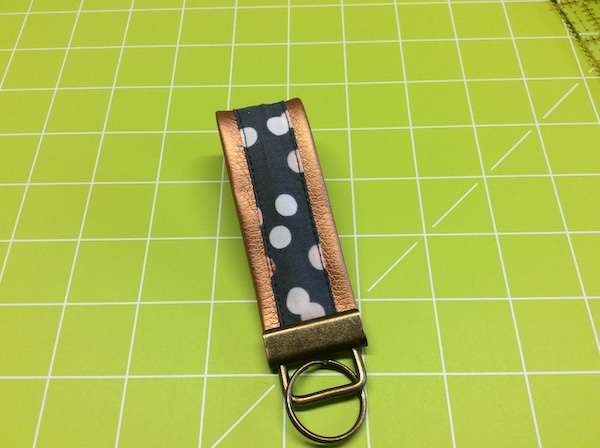
Sewing with faux leather
The Modelo faux leather used here is available in a great range of colours including metallic and pearl finishes. It has a woven fabric backing, which sews really well with a normal machine foot. Depending on faux leather fabric you choose you might find it easier to sew with a teflon foot or walking foot (the Modelo is easy to sew with so I didn't need either), also make sure you increase your stitch length a little to around as this avoids stressing the faux leather at the seams.